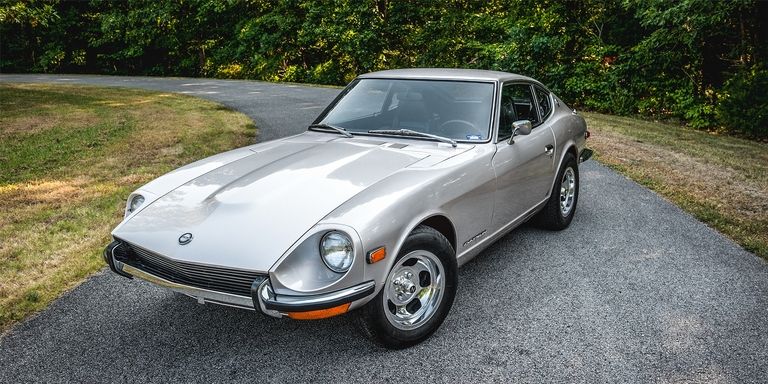
What You Need to Know Before Buying a 1970-1973 Datsun 240Z
admin
THE EXPERIENCE
Pull the choke lever between the seats, crank the starter, and go. It’s like a British car, but with a much higher probability of everything working. The 2.4-liter engine is internal-combustion marriage material—torquey and wonderful-sounding, as you’d expect of six tiny cylinders in a row. It’s also indestructible. And for anybody accustomed to an old Moss gearbox in a British car, the Datsun transmission is fantastic—it works flawlessly and doesn’t sound like it’s ingesting parts. The Z handles predictably and is eminently tossable, provided it’s riding on anything close to the original, skinny, 14-inch tires. A 240Z doesn’t necessarily excel at any one thing, dynamically, but it does everything well. It was and is a giant killer, the everyman’s E-type. And, in its own right, one of the most entertaining sports cars of all time. Let’s not forget those looks, either—as good as any exotic GT car of its day and perhaps any since. ones. That said, they offer a very similar driving experience. (The later 260Z and 280Z cars draw another parallel to Series 2 and 3 E-types.)

THE ONE YOU WANT
The Datsun’s comparison to the Jaguar E-type also holds on the collector market. The most valuable E-types are the 1961–1967 Series 1 cars. Of these S1 Jaguars, the first few hundred cars are valued much higher, due to unique features like external bonnet latches and “flat” floors. So it goes with 240Zs: The first 500 or so cars are unique in many details, extremely difficult to restore properly, due to original early-production parts being unobtainable. The balance of the Datsun Series 1 cars, built through the middle of 1971, are the second most valuable. All Series 1 cars are identifiable by the two external vents on the rear liftgate under the window and chrome “240Z” badges on the rear sail panels.
The Series 2 cars had several changes, including a revised interior. The 1973 models are the least collectible, mostly due to their increased emissions controls; the now-dreaded and oft-tossed “flat tops” carburetors replaced the earlier “round tops” ones. That said, they offer a very similar driving experience. (The later 260Z and 280Z cars draw another parallel to Series 2 and 3 E-types.)
SO, WHAT ARE THEY WORTH?
A lot more than they used to be. About 10 years ago, I bought the finest original Series 1 car I had ever seen—low miles, flawless original paint, and an interior and chassis you could eat off. It wasn’t one of the first 500, but it was a very early production car. I paid $15,000, probably a record price at the time. I enjoyed the car for a few years and sold it for $25,000. That buyer later sold it for $40,000. Today, the same car is likely worth closer to $75,000. The best low-VIN cars are now, in a few cases, selling for close to six figures. I suspect they will continue to climb. Keep in mind, these are prices for the best-of-the-breed cars—bone-stock with squeaky-clean histories. The median price for a very nice “driver” 240Z is still in the low-to-mid-$20,000 range, with rust buckets and hot-rodded ones being far less. The biggest bang for the buck is a Series 2 240Z in clean, close-to-stock condition. A rising tide lifts all boats, so as the early Series 1 cars continue to appreciate, the Series 2 cars are following.

 To see the full article click here
To see the full article click here






